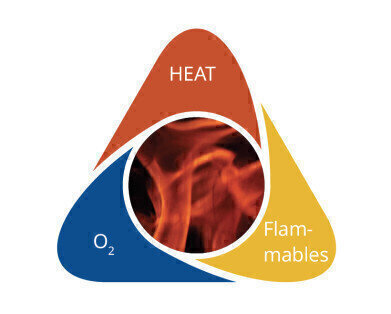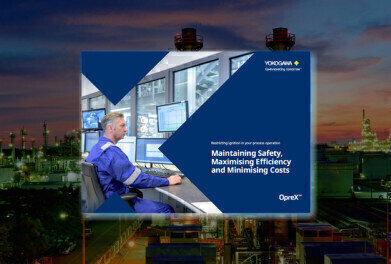Safety
How safe is your asset?
Feb 19 2020
Fire and explosion are the biggest inherent hazards facing the chemicals industry.
The uncontrolled ignition of flammable components such as methane (CH4), carbon monoxide (CO), and hydrogen (H2) in the presence of combustion supporting oxygen (O2) can make chemical processing a hazardous activity, particularly in combustion. Not only is there a potential safety risk with burning combustible materials, but the by-products are often combustible too.
Restricting ignition
Ignition needs three basic elements to occur – a combustion supporting gas (O2), heat and flammables. In order to maintain safe operations, it is imperative to control the elements that allow ignition to take place.
It is essential for operators to be able to minimise the hazards of ignition, combustion and explosion. This includes ensuring there are no leakages in the heat exchanger or pipelines, which can further fuel the combustion process. Current emission regulations must also be complied with.
Modern chemical processing is based around three main objectives: maximising production, minimising cost, and ensuring safety is not compromised. But how can you achieve all three at the same time?
Unfortunately, the limitations of conventional technologies severely impact the capabilities of operators, maintenance and instrument engineers to meet this triple challenge effectively.
A safe solution
Ensuring your asset and instruments are maintained so that your colleagues can work in a safe environment is your highest priority; and safety supports the other two objectives of increased efficiency and minimised costs.
Rather than saving money, hazardous operations and working processes will actually cost much more due to production inconsistencies and downtime. At worst, lack of safety can lead to a hazardous incident or explosion with potentially catastrophic consequences. Because of their limitations, conventional analyser technologies have prevented operators from running their processes in the safest manner – without them ever being aware.
Yokogawa’s Tunable Diode Laser Spectrometer (TDLS) analyser system provides a safe solution to this challenge. It is a step change in the industry’s ability to operate safely by allowing O2 control while answering the need for maximum efficiency and minimised costs.
The TDLS is designed according to IEC 61508 and certified SIL2 by exida. It provides reliable, real-time, non-contact, and direct O2 measurement with less minimum downtime and assured improvements in safety and negligible delay time to detect; and it is easy to apply.
This is a major development in supporting maintenance and instrument engineers as they reduce the threat of hazards while ensuring maximum operational efficiency and lower costs.
It is a step change in the industry’s ability to operate safely by allowing O2 control while answering the need for maximum efficiency and minimised costs.
For more information on Yokogawa’s TDLS, download our free eBook.
Digital Edition
PIN 26.1 Feb/Mar 2025
March 2025
Analytical Instrumentation - Elemental Analysis for Quality and Process Control at Refineries, for Lubricants and Wear Metals in Engine Oils - Synthetic Lubricants: New Developments - Scaling...
View all digital editions
Events
Solar & Energy Storage Summit 2025
Apr 23 2025 Denver, CO, USA
Apr 27 2025 Portland, OR, USA
Apr 29 2025 Mumbai, India
Apr 29 2025 Edmonton, AB, Canada
May 05 2025 Houston, Tx, USA






















